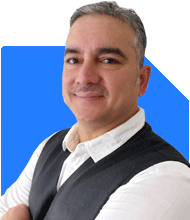Samraat Jadhav |2508 Answers |Ask -Follow
Stock Market Expert - Answered on Sep 05, 2023
He is a SEBI-registered investment and research analyst and has over 18 years of experience in managing high-end portfolios.
A management graduate from XLRI-Jamshedpur, Jadhav specialises in portfolio management, investment banking, financial planning, derivatives, equities and capital markets.... more

I have 6000 shares of Easy Trip @ 51 average price. Pl suggest me the
Declining profits every quarter for the past 2 quarters
Book Value Per Share deteriorating for last 2 years
BAD Data - you have to hold for longer period.
Disclaimer: Investments in securities are subject to market RISKS. Read all the related documents carefully before investing. Please consult your appointed/paid financial adviser before taking any decision. The securities quoted are for illustration only and are not recommendatory. Registration granted by SEBI, membership of BASL and certification from NISM in no way guarantee performance of the intermediary or provide any assurance of returns to investors.
You may like to see similar questions and answers below
Advait Arora | Answer |Ask -Follow
Financial Planner - Answered on May 24, 2023
Samraat Jadhav |2508 Answers |Ask -Follow
Stock Market Expert - Answered on Jun 19, 2023
Samraat Jadhav |2508 Answers |Ask -Follow
Stock Market Expert - Answered on Jun 21, 2023
Advait Arora | Answer |Ask -Follow
Financial Planner - Answered on Aug 28, 2023
Samraat Jadhav |2508 Answers |Ask -Follow
Stock Market Expert - Answered on Feb 01, 2024
Ramalingam Kalirajan |10893 Answers |Ask -Follow
Mutual Funds, Financial Planning Expert - Answered on Dec 15, 2025
Ramalingam Kalirajan |10893 Answers |Ask -Follow
Mutual Funds, Financial Planning Expert - Answered on Dec 15, 2025
Radheshyam Zanwar |6746 Answers |Ask -Follow
MHT-CET, IIT-JEE, NEET-UG Expert - Answered on Dec 15, 2025
Ramalingam Kalirajan |10893 Answers |Ask -Follow
Mutual Funds, Financial Planning Expert - Answered on Dec 15, 2025
Ramalingam Kalirajan |10893 Answers |Ask -Follow
Mutual Funds, Financial Planning Expert - Answered on Dec 15, 2025
Ramalingam Kalirajan |10893 Answers |Ask -Follow
Mutual Funds, Financial Planning Expert - Answered on Dec 15, 2025
Samraat Jadhav |2508 Answers |Ask -Follow
Stock Market Expert - Answered on Dec 15, 2025
Ramalingam Kalirajan |10893 Answers |Ask -Follow
Mutual Funds, Financial Planning Expert - Answered on Dec 15, 2025
Reetika Sharma |425 Answers |Ask -Follow
Financial Planner, MF and Insurance Expert - Answered on Dec 15, 2025
Radheshyam Zanwar |6746 Answers |Ask -Follow
MHT-CET, IIT-JEE, NEET-UG Expert - Answered on Dec 15, 2025

























